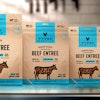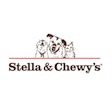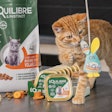
Climate change, collapsing ecosystems, labor exploitation and other threats to our current standard of living may be even harder to observe and understand than a virus and immunology. Nevertheless, in 2020, pet food suppliers, producers, packagers and others continued to explore ways to alter production processes and use resources in ways that will allow future generations to enjoy a lifestyle at least as comfortable as our own. As the pandemic forced people to consider invisible health threats, perhaps the disease encouraged greater contemplation of other large-scale threats that require observation to understand. Sustainability claims and practices grew as a component of the pet food industry during 2020, building on an established foundation. However, the pet food industry, like all others, still faces challenges to creating businesses that can endure without depleting and degrading the Earth or its people, leaving many opportunities for pet food sustainability innovations in 2021.
These 11 articles are ranked by unique pageviews, a measure of how many times individual computers, and ostensibly individual humans, viewed a particular website page. Google Analytics provided the unique pageview data from Jan. 1, 2020 to Dec. 31, 2020.
1. 4 sustainable pet food ingredient top picks by suppliers
3,018 unique pageviews
TIM WALL - JANUARY 15, 2020
Four pet food ingredient suppliers selected the top ingredient in their company’s profile based on sustainability criteria.
2. What sustainable pet food and treat claims mean in 2020
1,304 unique pageviews
DEBBIE PHILLIPS-DONALDSON - AUGUST 6, 2020
Do sustainable marketing claims on pet food and pet treats affect sales, market share and pricing – and have the pandemic and economy changed those factors?
3. Quality, sustainability to dominate 2020 pet food trends
889 unique pageviews
LINDSAY BEATON - JANUARY 6, 2020
Educated pet consumers are more involved than ever, and according to the industry that involvement means close scrutiny in 2020.
4. For pet food, human food, sustainability now a must have
775 unique pageviews
DEBBIE PHILLIPS-DONALDSON - February 13, 2020
Consumers demand that pet food and human food companies act sustainably in all they do, but does that apply to pet food ingredients from the human food chain?
5. Solar power fully fuels pet treat facility in US
unique pageviews
TIM WALL - OCTOBER 27, 2020
International Energy Agency analysts calculated that solar power developer installed 114.9 gigawatts of new solar power capacity in 2019 worldwide.
6. Pet food exec sustainability idea differs from consumers
602 unique pageviews
TIM WALL - DECEMBER 17, 2020
As sustainability claims have become a mainstream marketing message in pet food, the meaning of that message may have diverged among both pet owners and pet food professionals.
7. Area, age, income differ in sustainable pet food market
611 unique pageviews
TIM WALL - JULY 27, 2020
Pet food buyers in the top 25 U.S. urban areas tended to be as likely to purchase sustainable pet food as those in smaller cities. Rural counties were less likely to purchase sustainable pet foods.
8. Sustainability conflicts with premium pet food packaging
561 unique pageviews
TIM WALL - DECEMBER 8, 2020
While renewable materials, like fish gelatin, give pet food packaging fairly good oxygen transmission rates (OTR), they degrade very quickly.
9. Sustainable products maintained sales during pandemic
579 unique pageviews
TIM WALL - JULY 24, 2020
Some have contended that the COVID-19 pandemic would force sustainability concerns out of consumers’ minds.
10. How sustainable pet food claims resonate with consumers
433 unique pageviews
DEBBIE PHILLIPS-DONALDSON
SEPTEMBER 3, 2020 - Leading into 2020, sustainability seemed to be gaining traction among pet food consumers. Did COVID-19 and its economic consequences slow that? Recent data shows perhaps not.
11. Sustainability in pet food packaging: An evolving trend
114 unique pageviews
LINDSAY BEATON - SEPTEMBER 7, 2020
Packaging continues to be a focus for sustainability initiatives, as pet owners demand better from the companies they interact with.
















